Vertebrae
Vertebrae are the individual bones that make up the vertebral column, also known as the spine. The vertebral column is a crucial part of the axial skeleton and provides support and protection for the spinal cord while allowing for flexibility and movement. Each vertebra is a complex structure that consists of various parts and has specific functions.
Types of Vertebrae
There are five main types of vertebrae in the human spine:
- Cervical vertebrae (C1-C7) - These are the vertebrae located in the neck region.
- Thoracic vertebrae (T1-T12) - These vertebrae are found in the upper and mid-back and are connected to the ribs.
- Lumbar vertebrae (L1-L5) - The largest and strongest vertebrae, located in the lower back.
- Sacral vertebrae (S1-S5) - Fused vertebrae that form the sacrum, which connects the spine to the pelvis.
- Coccygeal vertebrae (Co1-Co4) - Also fused, these form the coccyx or tailbone at the base of the spine.
Structure of a Vertebra
Each vertebra has several key components:
- Body - The thick, disc-shaped anterior portion that bears most of the weight.
- Arch - Forms the vertebral foramen, a space through which the spinal cord passes.
- Processes - Bony projections that serve as attachment points for muscles and ligaments.
- Intervertebral Discs - Cartilaginous discs that cushion and separate the vertebrae, allowing for flexibility and movement.
- Spinal Canal - The collective space formed by the vertebral foramina, which houses and protects the spinal cord.
Functions of Vertebrae
The vertebrae have several important functions:
- Support - They provide structural support for the body, especially the upper body and head.
- Protection - The vertebrae protect the delicate spinal cord from injury.
- Flexibility - Through the structure of the intervertebral discs and articulations between the vertebrae, the spine can flex, extend, rotate, and bend laterally.
- Attachment - Muscles, ligaments, and tendons attach to the processes of the vertebrae, allowing for movement and stability.
Study Guide for Vertebrae
Here are some key points to remember when studying vertebrae:
- Identify the five types of vertebrae and their respective locations in the spine.
- Understand the structure of a typical vertebra, including the body, arch, processes, and spinal canal.
- Explain the functions of the vertebrae in supporting, protecting, and allowing movement for the body.
- Describe the role of intervertebral discs in providing cushioning and flexibility between vertebrae.
- Recognize the importance of the vertebral column as part of the axial skeleton and its connections to other skeletal elements.
With a solid understanding of the types, structure, and functions of vertebrae, you will have a strong foundation for comprehending the essential role of the spine in the human body.
[Vertebrae] Related Worksheets and Study Guides:
.◂Science Worksheets and Study Guides Fourth Grade. Introduction to animals
Study Guide Introduction to animals
Introduction to animals  Worksheet/Answer key
Worksheet/Answer key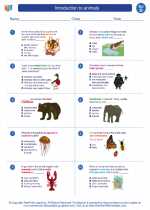 Introduction to animals
Introduction to animals  Worksheet/Answer key
Worksheet/Answer key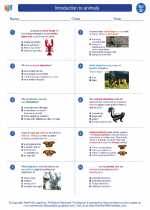 Introduction to animals
Introduction to animals  Worksheet/Answer key
Worksheet/Answer key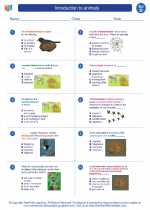 Introduction to animals
Introduction to animals  Vocabulary/Answer key
Vocabulary/Answer key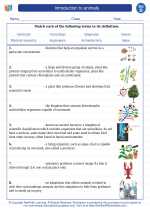 Introduction to animals
Introduction to animals  Vocabulary/Answer key
Vocabulary/Answer key Introduction to animals
Introduction to animals  Vocabulary/Answer key
Vocabulary/Answer key Introduction to animals
Introduction to animals  Vocabulary/Answer key
Vocabulary/Answer key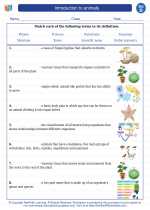 Introduction to animals
Introduction to animals 

 Worksheet/Answer key
Worksheet/Answer key
 Worksheet/Answer key
Worksheet/Answer key
 Worksheet/Answer key
Worksheet/Answer key
 Vocabulary/Answer key
Vocabulary/Answer key
 Vocabulary/Answer key
Vocabulary/Answer key
 Vocabulary/Answer key
Vocabulary/Answer key
 Vocabulary/Answer key
Vocabulary/Answer key

The resources above cover the following skills:
Concepts of Life Science (SC1, SC2, SC3)
The student demonstrates an understanding of how science explains changes in life forms over time, including genetics, heredity, the process of natural selection and biological evolution by showing the relationship between physical characteristics of Alaskan organisms and the environment in which they live.